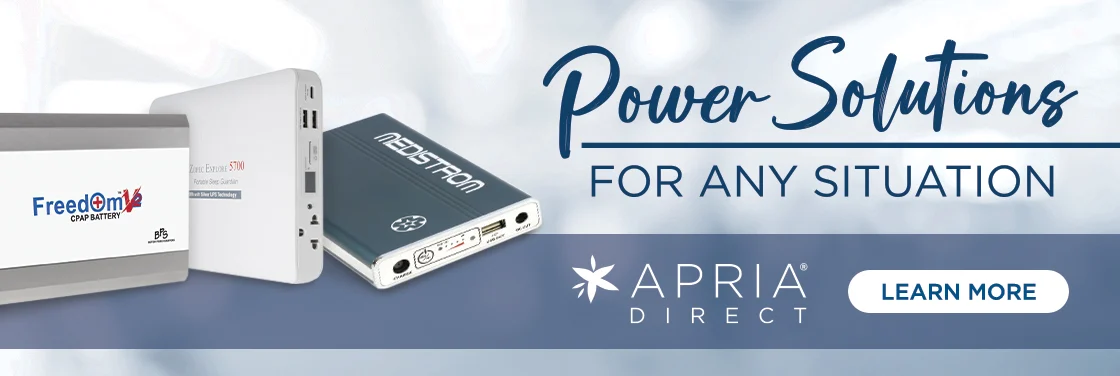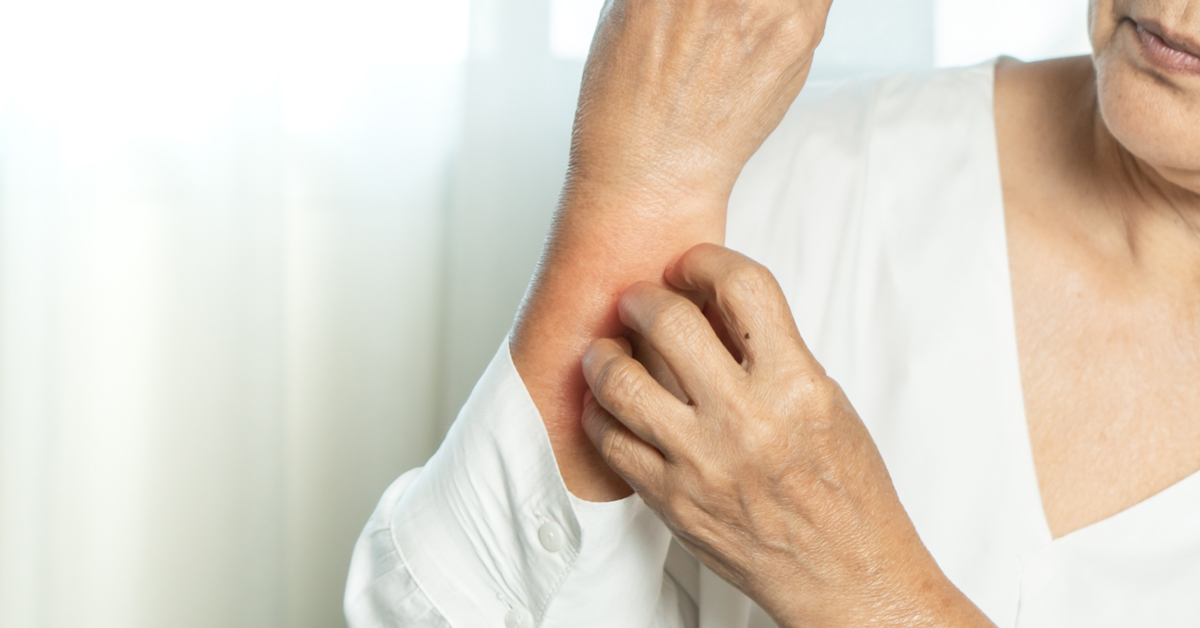Simple Tips to Help Prevent Headaches When You Use CPAP Therapy
About 1 of every 13 people wake up with morning headaches, which may be caused by a variety of factors, such as stress, teeth grinding, and celebrating a bit too much the night before.
Researchers have also shown one other potential cause of morning headaches: sleep apnea. As many as 18% of people with sleep apnea experience what are commonly called “sleep apnea headaches.”
And some people complain of headaches when they start CPAP (continuous positive airway pressure) therapy, the most popular and effective treatment for sleep apnea.
Does CPAP cause headaches?
Says Robert Miller, Apria Healthcare Vice President of Sleep Business, “There is no evidence to support the notion of ‘CPAP headaches.’ In fact, CPAP can help reduce headaches associated with sleep apnea.”
This article is devoted to answering questions about sleep apnea headaches and how to prevent them from occurring.
What Are Sleep Apnea Headaches?
Sleep apnea headaches happen upon waking. They usually last less than 30 minutes—but can last for as long as a few hours. They also occur at least 15 days per month.
Sleep apnea headaches are characterized by a pressing—not pulsing—pain felt on both sides of the head.
Unlike migraine headaches, sleep apnea headaches don’t cause nausea or sensitivity to light or sound.
Risk Factors for Sleep Apnea Headaches
Many risk factors are similar to those for sleep apnea:
- Age (the risk of sleep apnea increases as a person gets older)
- Excess body weight
- Being female with a history of headaches
- Snoring
- Smoking or exposure to secondhand smoke
- Airway anatomy (large tongue, adenoids, tonsils, or uvula; a small upper airway; recessed chin can all contribute to a smaller airway)
- Nasal congestion or allergies
-
Throat muscles that relax more than normal during sleep (this can be worse if sedatives or alcohol are taken before bedtime)
- Family history of sleep apnea or snoring
Some research suggests that more severe sleep apnea may result in more severe sleep apnea headaches.
What Causes Sleep Apnea Headaches?
The specific cause isn’t known. But researchers have proposed that the main culprit is low blood oxygen levels. This happens because sleep apnea interferes or even stops your breathing, which reduces the flow of oxygen to your brain. Carbon dioxide builds up in your bloodstream and makes the blood vessels in your brain expand. As the expansion builds, so does the pressure.
The result: a painful sleep apnea headache.
The Proven Way to Reduce Sleep Apnea Headaches: CPAP
CPAP involves wearing a mask that fits comfortably over your nose or mouth while you sleep. The mask is connected to a machine by your bed that provides a constant, quiet flow of pressurized air to keep your airways open so you can breathe—and sleep—normally.
CPAP has been used for decades to treat sleep apnea successfully and safely. Studies demonstrate that CPAP therapy reduces headaches in people who suffer from migraines.
But headaches may still occur. Don’t worry – they can be resolved or prevented.
Proper Setup and Use of CPAP Therapy Make the Difference
Ask your doctor about your CPAP pressure settings
When the pressure is properly set, your CPAP device can help improve the quality and quantity of your sleep every night. But if you are getting headaches, CPAP pressure that is too high may be the cause. Talk with your doctor about adjusting the pressure.
Your doctor may also recommend two other kinds of CPAP devices:
- APAP (automatic positive airway pressure) automatically adjusts the amount of airway pressure when it detects breathing problems
- BiPAP (bilevel positive airway pressure) delivers pressurized air at two alternating levels: one level when you inhale and another when you exhale
Add moisture with a heated humidifier
CPAP therapy can cause dryness of the mouth, nose, and throat. The reason: the pressurized air delivered by your CPAP machine can reduce moisture in nasal passages.
This increases the risk of sinus congestion and nasal infections, which may lead to headaches.
CPAP humidifiers and heated tubing replace the moisture in your nasal passages that’s lost during your CPAP therapy to reduce dryness and make your CPAP therapy more comfortable.
Keep your CPAP equipment clean
This helps prevent the buildup of bacteria, mold, dust, and germs, which may cause sinus infections, a leading cause of headaches.
Most manufacturers and sleep experts recommend cleaning your CPAP mask daily and your CPAP filter, tubing, and humidifier weekly.
If sinus infections continue, your doctor may prescribe sinus medication.
Try a different CPAP mask
A nasal mask or nasal pillow may be putting too much pressure on your sinuses. Instead, speak with your doctor about switching to a full-face or hybrid mask that permits mouth breathing and relieves sinus pressure.
Be patient with your CPAP therapy
It may take you a while to adjust to your therapy. But stick with it. Over time, you’ll find you are sleeping better each night—and feeling better every day!
CPAP Therapy Shouldn’t Be a Headache!
We understand: CPAP therapy can be challenging. But understanding how to deal with those challenges and using your CPAP machine nightly will help you better manage your sleep apnea—and reduce your risk of morning headaches!
References
1. Ryan, T, Rehman, A. (Updated 2023, April 6). Morning Headaches: Why Do I Wake Up With A Headache? Sleep Foundation.
https://www.sleepfoundation.org/physical-health/morning-headaches#.
2. Pacheco, D. (Updated 2023, February 22). Sleep Apnea Headaches. Sleep Foundation. https://www.sleepfoundation.org/sleep-apnea/sleep-apnea-headaches.
3. West, M. (2022, May 20). What is a sleep apnea headache? Medical News Today. https://www.medicalnewstoday.com/articles/sleep-apnea-headache#:~:text=What%20does%20it%20feel%20like,will%20not%20cause%20pulsating%20pain.
4. Campellone, JV. (Updated 2021, November 9). Headache. Medline Plus. https://medlineplus.gov/ency/article/003024.htm.
5. International Headache Society (2018). Sleep apnoea headache. The International Classification of Headache Disorders – ICHD-3. https://ichd-3.org/10-headache-attributed-to-disorder-of-homoeostasis/10-1-headache-attributed-to-hypoxia-andor-hypercapnia/10-1-4-sleep-apnoea-headache/.
6. Migraine Canada. Sleep apnea and migraine. Migraine Canada. https://migrainecanada.org/posts/the-migraine-tree/roots/medical-background/sleep-apnea-and-migraine/.
LEGAL DISCLAIMER: Material in this newsletter is provided for general health education and informational purposes and to provide references to other resources only; it may not apply to you as an individual. While Apria Healthcare believes that the information provided through this communication is accurate and reliable, Apria Healthcare cannot and does not make any such guarantee. It is not intended to be a replacement for professional medical advice, evaluation, diagnosis, services or treatment (collectively, “medical treatment”). Please see your healthcare provider for medical treatment related to you and your specific health condition(s). Never disregard medical advice or delay seeking medical care because of something you have read on or accessed through this website. Reading this newsletter should not be construed to mean that you have a healthcare provider/patient relationship.


.png)



